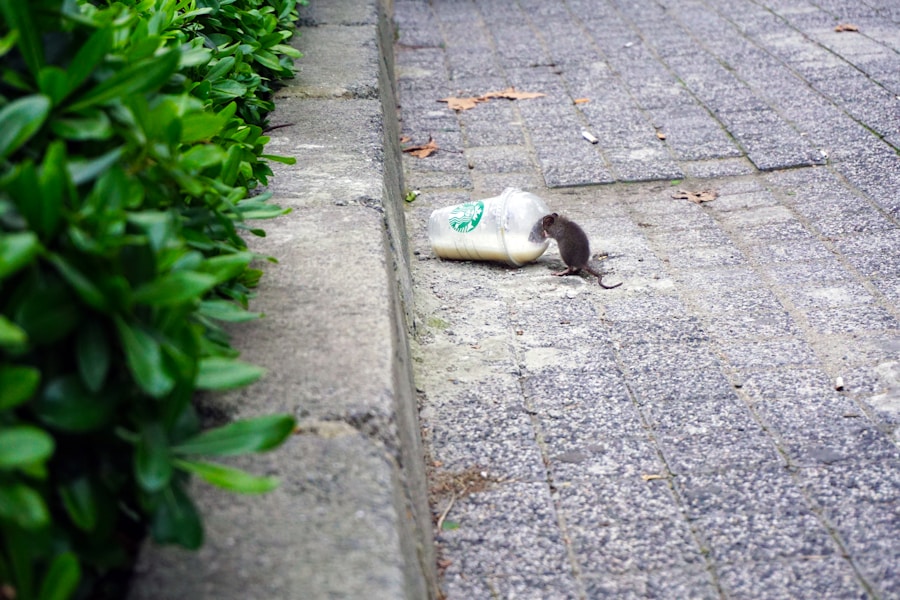
Imagine a world shrouded in darkness, where tiny creatures roam silently, their every move a mystery to the human eye. Welcome to the secret life of mice, where these small, furry beings navigate their surroundings with astonishing agility, communicate through invisible scents, and build intricate nests hidden from prying eyes.
In this captivating journey into the world of mice, we unravel these remarkable creatures’ enigmatic behavior and habits. From their social structures and communication methods to their cognitive abilities and impact on ecosystems, prepare to be enthralled by the intricacies of the lives in the shadows. Get ready to delve into “The Secret Life of Mice: Understanding Their Behavior and Habits” and discover the extraordinary world beneath our feet.
Key Takeaways
- Mice are adaptable creatures with keen senses.
- They live in colonies and communicate through scent marking.
- Mice build nests for safety and comfort.
- Play behavior aids in development and socialization.
- They are omnivorous, opportunistic feeders.
- Mice reproduce rapidly and care for their young.
- Environmental factors impact their behavior.
- They possess cognitive abilities.
- Common health issues require preventive measures.
- Appreciating and respecting mice is important.
Decoding the Mystery: Understanding Mouse Behavior and Habits
Mice may be tiny, but their lives are packed with complex behaviors and fascinating habits. Let’s peek into their secret world and learn how they tick!
Bonus Fact: Did you know a group of mice is called a “mischief”? Now you can impress your friends with your newfound mouse expertise!
This table is just a starting point. There’s so much more to discover about these amazing creatures. Keep your eyes peeled, listen for their squeaks, and you might just unlock the secrets of the mouse world!
The Social Structure of Mice: Why They Live in Groups
Mice are social animals and live in groups called colonies. Living in groups provides several benefits for mice, including increased protection from predators, improved foraging efficiency, and enhanced reproductive success. In a mouse colony, there is a social hierarchy where dominant individuals have access to resources and mates, while subordinate individuals have limited access.
The social hierarchy in a mouse colony is established through aggressive interactions. Dominant mice will assert dominance by aggressively chasing, biting, or vocalizing towards subordinate mice. Subordinate mice often display submissive behaviors such as crouching or fleeing when confronted by a dominant individual.
The Importance of Scent Marking in Mouse Communication
Scent marking is an important form of communication for mice. Mice have scent glands on various parts of their bodies, including their cheeks, feet, and genitals. These scent glands produce pheromones, chemical signals other mice can detect.
Mice use scent marking to communicate various messages, including marking territory, attracting mates, and signaling reproductive status. When a mouse marks its territory, it essentially claims that area as its own and warns other mice to stay away. This helps to reduce conflicts between individuals and maintain social order within the colony.
Mice engage in different types of scent-marking behaviors. One common behavior is urine marking, where mice will urinate on objects or surfaces to leave their scent. Mice also engage in cheek rubbing, where they rub their cheeks against objects to leave their scent. This behavior is often seen when mice explore new environments or investigate potential food sources.
Nest Building: How Mice Create Safe and Comfortable Homes

Mice are skilled nest builders and create nests to provide themselves with a safe and comfortable home. Nest building behavior starts with selecting a suitable location, typically a hidden and protected area such as a burrow or a crevice in a wall. To construct their nests, Mice will then gather nesting materials such as twigs, leaves, grass, and shredded paper.
The nest construction involves weaving the nesting materials together to create a structure that provides insulation and protection from the elements. The nest is typically lined with softer materials such as fur or feathers for added comfort. Mice will continuously maintain and repair their nests to remain safe and comfortable.
A safe and comfortable home is crucial for mice, protecting them from predators, extreme temperatures, and other environmental threats. The nest also serves as a place for mice to rest, sleep, and raise their young. A well-built nest can help ensure the survival and well-being of the mouse colony.
The Role of Play in Mouse Development and Socialization
Play behavior is an important part of mouse development and socialization. Play allows young mice to practice important skills such as hunting, grooming, and social interactions. It also helps them develop physical coordination and cognitive abilities.
Mouse play behavior can include activities such as chasing, wrestling, and climbing. Play often involves social interactions with other mice, which helps young mice learn how to communicate and establish social bonds. Play can also serve as a form of stress relief and help mice cope with challenging or unfamiliar situations.
Play behavior is not limited to young mice. Adult mice also engage in play behavior, although it may be less frequent than younger individuals. Play behavior in adult mice can serve as a form of social bonding and help maintain social cohesion within the colony.
Feeding Habits of Mice: What They Eat and How They Find Food
Mice are omnivorous, meaning they eat plant matter and small animals. Their diet includes various foods, including seeds, grains, fruits, insects, and small vertebrates. Mice use sharp incisors to gnaw through tough materials such as wood or seeds.
Finding food is an important part of a mouse’s daily routine. Mice have a keen sense of smell, which helps them locate food sources. They will use their sense of smell to detect the presence of food and follow scent trails to find it. Mice are also skilled climbers who often search for food in trees or other elevated areas.
Mice are opportunistic feeders and will take advantage of any available food source. They are known for their ability to find and exploit food resources in human environments such as homes or agricultural fields. This adaptability allows mice to survive in a wide range of habitats.
Mouse Reproduction: Mating, Pregnancy, and Parenting
Mice have a rapid reproductive rate and can produce multiple litters each year. Mating behavior in mice is initiated by the female, who releases pheromones to attract males. Male mice then engage in courtship behaviors such as chasing, grooming and vocalizing to attract females.
Once mating occurs, the female mouse will undergo a gestation period of approximately 19-21 days. During this time, she will build a nest and prepare for the arrival of her offspring. The female mouse will give birth to a litter of pups born hairless and blind. The mother will care for her pups and keep them warm.
As the pups grow, they explore their surroundings and interact with their siblings and parents. The mother mouse will continue caring for her offspring until they are old enough to fend for themselves. At around 4-6 weeks, the young mice will become independent and leave the nest to establish their territories.
The Impact of Environmental Factors on Mouse Behavior
Environmental factors can have a significant impact on mouse behavior. Mice are highly adaptable animals and can adjust their behavior in response to environmental changes. For example, changes in temperature or food availability can influence mice’s activity patterns and foraging behavior.
Predator presence is another important environmental factor that can affect mouse behavior. The presence of predators can cause mice to alter their activity patterns, become more vigilant, or seek shelter in protected areas. Mice may also change their scent-marking behavior in response to predator presence, using different scent marks to communicate danger to other mice.
Human activities can also have an impact on mouse behavior. For example, the presence of humans or domestic pets can cause mice to avoid certain areas or alter their foraging behavior. Human-induced environmental changes such as deforestation or urbanization can also disrupt mouse populations and force them to adapt to new conditions.
Mouse Intelligence: What We Know About Their Cognitive Abilities
Mice are often underestimated in their cognitive abilities, but research has shown they are capable of complex behaviors and learning. Mice are model organisms in learning, memory, and decision-making studies.
Mice have been shown to possess spatial memory, which allows them to navigate complex environments and remember the location of food sources or escape routes. They are also capable of associative learning, where they can associate a specific stimulus with a reward or punishment.
In addition to spatial memory and associative learning, mice have also been shown to exhibit problem-solving abilities. They can learn to navigate mazes, solve puzzles, and use tools to obtain rewards. These cognitive abilities are thought to be related to their survival in the wild, where they need to find food and avoid predators.
Mouse Health and Disease: Common Health Issues and Prevention Tips
Like any living organism, mice are susceptible to various health issues. Some common health issues that mice may experience include respiratory infections, parasites, dental problems, and tumors. Mouse owners must be aware of these health issues and take steps to prevent and treat them.
Prevention is key when it comes to mouse health. Providing a clean and hygienic environment for mice is essential in preventing the spread of diseases. Regular cleaning of cages, providing fresh food and water, and maintaining proper ventilation can help keep mice healthy.
Regular veterinary check-ups are also important for monitoring the health of pet mice. A veterinarian can provide vaccinations, perform routine health checks, and advise on proper nutrition and care.
Handling and behavior of mice
This 17-minute video takes you on a captivating journey into the lives of mice, exploring their communication, social interactions, and surprising intelligence. You’ll discover how they navigate their environment, leave scent trails, and even form complex social bonds. It’s an excellent choice for a deeper understanding of these fascinating creatures.
Appreciating and Respecting the Lives of Mice
In conclusion, mice are fascinating creatures that play important roles in ecosystems and scientific research. Understanding their behavior, social structure, communication methods, and cognitive abilities can provide valuable insights into the natural world.
It is important to appreciate and respect the lives of mice. They are intelligent beings capable of complex behaviors and emotions. By understanding their needs and providing suitable environments, we can ensure their well-being and contribute to their conservation.
Conclusion
Whether living in the wild or as pets, mice deserve our respect and care. By learning more about these small creatures, we can develop a deeper appreciation for the diversity of life on our planet.
In conclusion, the secret life of mice unveils a world of fascinating behavior, intricate social structures, and remarkable cognitive abilities. From their adept scent marking and nest-building skills to their playful nature and rapid reproductive rate, mice captivate our curiosity and provide valuable insights into the natural world. By appreciating and respecting these small creatures, we can gain a deeper appreciation for the diversity of life on our planet. Let us continue to study, protect, and care for mice, ensuring their well-being and contributing to their conservation. In doing so, we honor the intricate tapestry of life surrounding us and uncover the wonders hidden within the secret lives of mice.
References
- National Geographic: https://www.livescience.com/mice-fight-wildlife-photogaphy-competition.html
- Animal Planet: https://www.animalfunfacts.net/rodents/113-mouse.html
- The Smithsonian Institution: https://pages.jh.edu/jhumag/0908web/mice.html

Welcome to micegoneguide.com, your go-to resource for eliminating rats and mice. Say goodbye to rodent infestations with our expert tips and strategies. Visit us now and reclaim your space!

